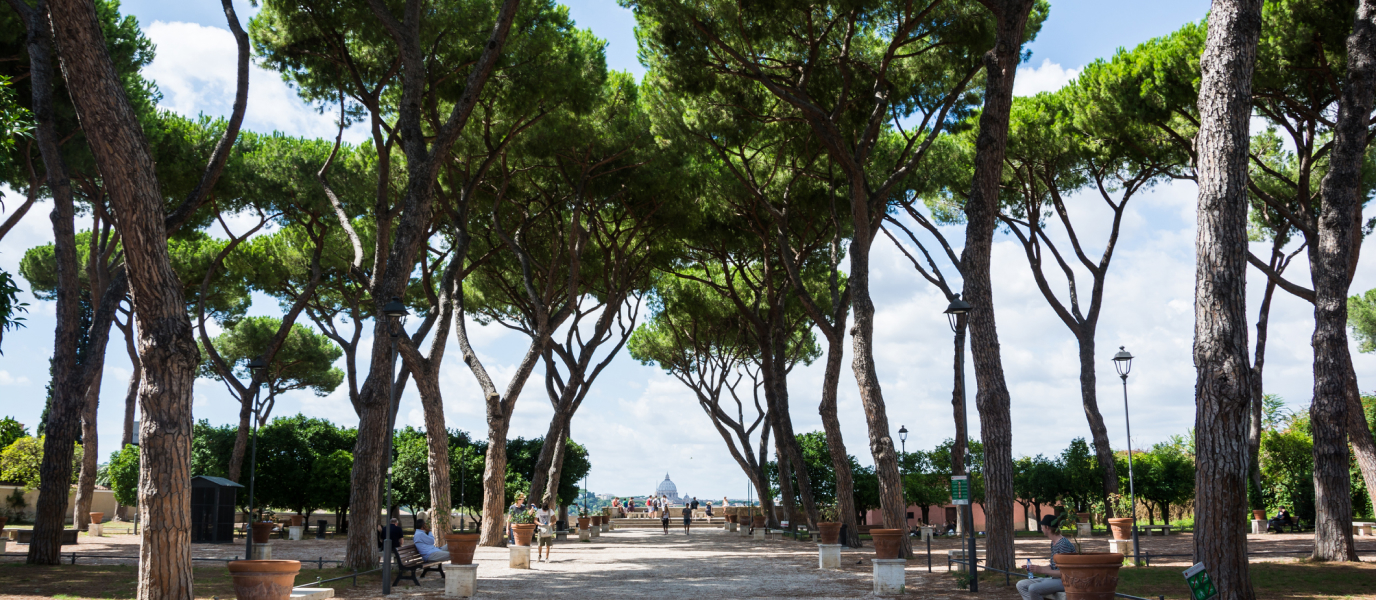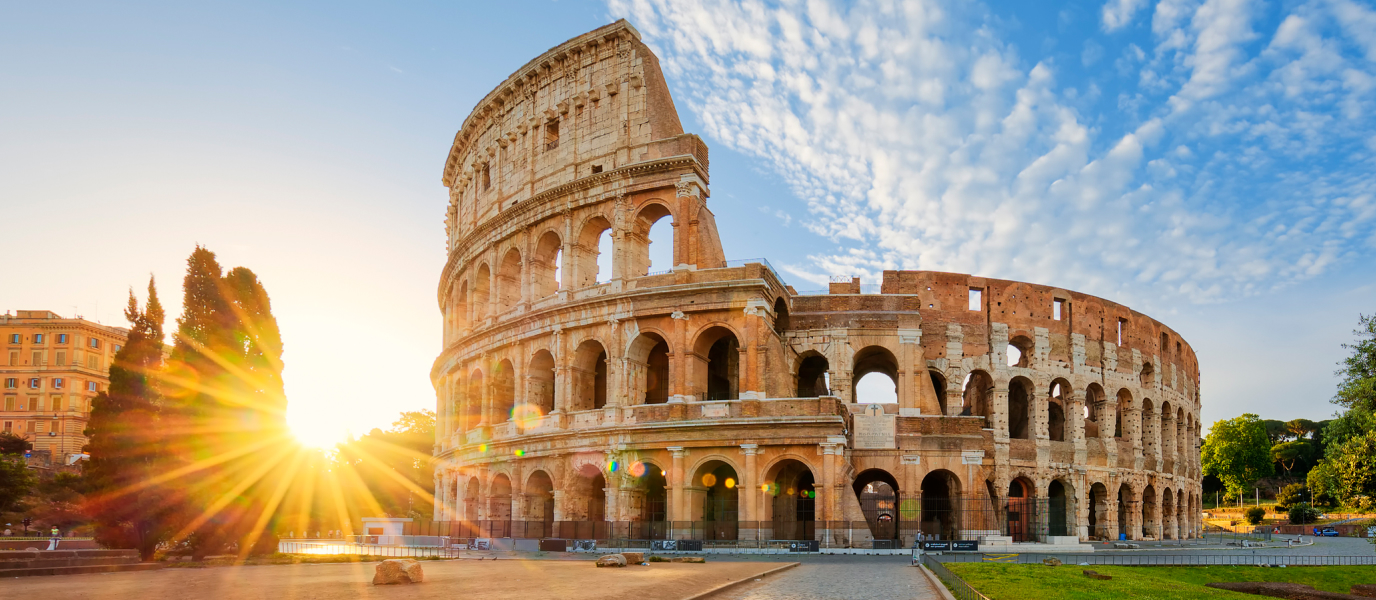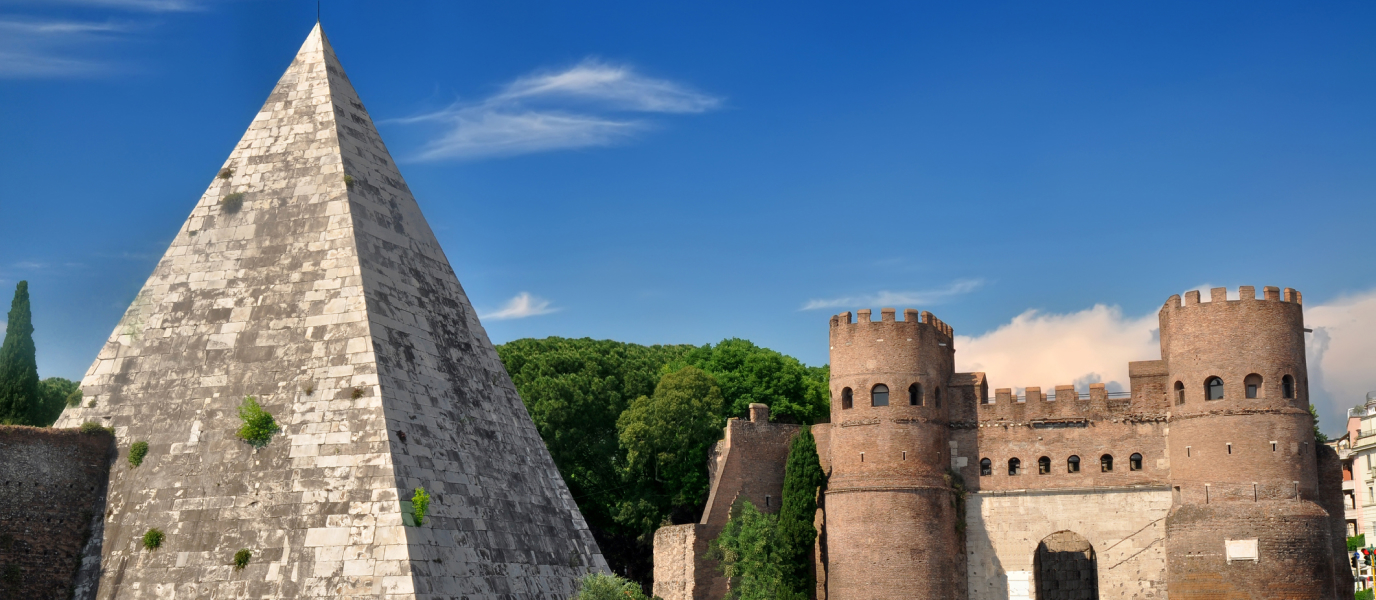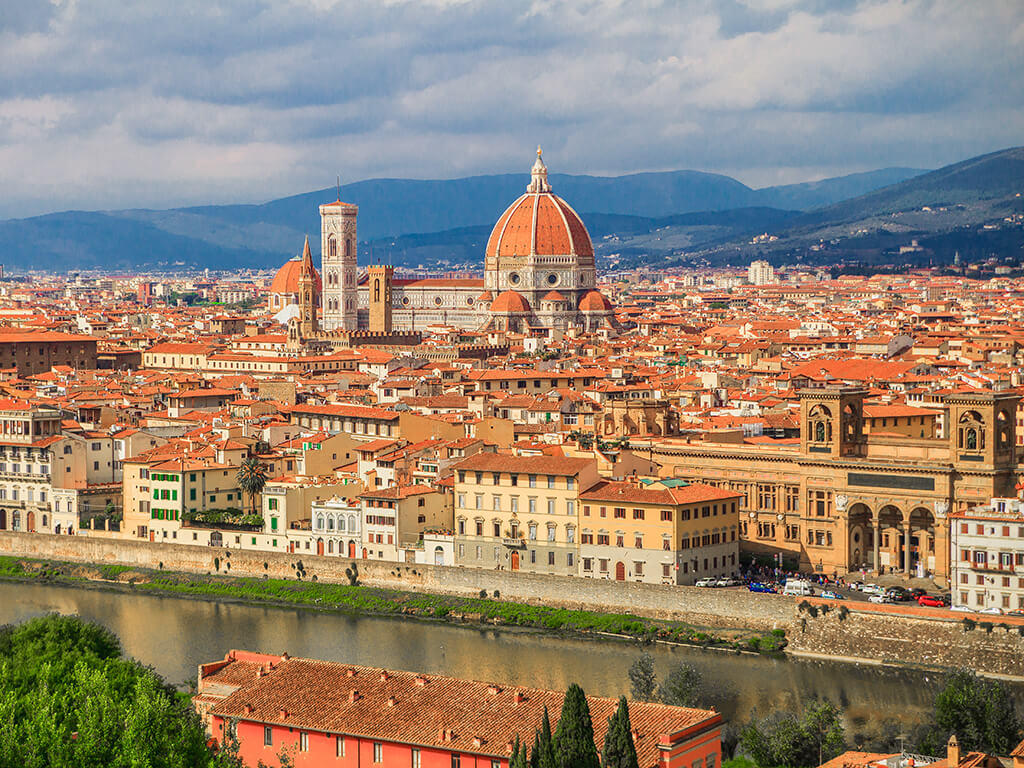You’ll need to eat at least one more margherita pizza to get over the excitement of climbing up Aventine Hill, one of seven hills in Rome, and discovering the idyllic Orange Garden. If you’re looking for something special, surprising, magical and unique, you will find it all here in this immense park among the cool of the pine trees and the scent of orange blossom.
It’s less than fifteen minutes’ walk from the Circus Maximus metro station and there is no entrance fee. It’s open all year round and it’s a wonderful place to go in the evenings for a bit of time out and relaxation away from the hustle and bustle of the city. Come and find out more.
Orange Garden in Rome
The park is known as both Savello Park (‘parco Savello’) and Orange Garden (‘parco degli Aranci’) and it dates back to the 10th century when the Savelli family fortress was there. The fortress no longer exists but you can still find some remains of the fortress walls in the park.
Since it was right next to the Basilica of St. Sabina, the park turned into the Dominican Order’s orchard. It was not until 1932 when there were some changes to urban planning in the area that it became a public park. It is worth mentioning that this was all down to the hard work put in by architect Raffaele de Vico.
The design of the Orange Garden was based on a belvedere, and it was conceived as a public park with a large, open space for enjoying the spectacular view over the city. It is entirely symmetrical with a large, central avenue that opens out into a breathtaking viewpoint. There are orange trees on both sides. Whilst there are many legends that suggest that the oranges in the park have magical and miraculous properties, be warned that picking them is not allowed.
What can you see from the Orange Garden?
While Rome boasts myriad spots of great beauty, this picturesque viewpoint is truly special at sunset, affording the Eternal City an aura of mystique and spirituality like no other.

The focal point right in the very middle of the view is the dome of St. Peter’s Basilica flanked by the rooftops and Rome’s domes and bell towers. You can easily see many of the key places in the city such as the Victor Emmanuel II Monument (link: The Victor Emmanuel II Monument) and Piazza Venezia or Trastevere and the churches on the other side of the Tiber River.
Aventine Hill churches: St. Sabina and St. Alexius
All the basilicas and churches in Rome are worth a mention and the two that are on Aventine Hill are no exception. They are St. Sabina church and St. Boniface of Tarsus and St. Alexius church.
The Basilica of St. Sabina
The Basilica of St. Sabina (‘Santa Sabina all’Aventino’) is at the main entrance to Orange Garden. It was built in the 5th century and it is one of the best examples of early Christian basilicas in Rome. The building is incredibly light because of its longitudinal and open design.
The basilica was dedicated to a Roman matron who lived in the area and a great number of 5th-century remnants still remain. The doors on the outside were carved out of cypress wood and the twenty-four columns came from an Egyptian or Roman temple. Make sure you also take a look at the marble floors and a mosaic with an inscription and a representation of two female figures. It is all believed to be of incalculable artistic value.
There is also even a legend attached to the church since they say that it was where all the oranges came from. The legend says that a Spanish monk planted an orange tree in the garden that still bears fruit to this day.
The Basilica of St. Boniface of Tarsus and St. Alexius
This basilica is a little further up the hill. It is also very beautiful and even older than St. Sabina since it dates back to the 3rd and 4th centuries. The Basilica of St. Boniface of Tarsus and St. Alexius (‘Basilica dei Santi Bonifacio ed Alessio’) houses relics of the two saints to whom it is dedicated, as well as others such as those of St. Thomas Becket, Archbishop of Canterbury. It has undergone changes and additions over the years. However, the most attractive things about it is its garden. You will find that the views from there in the evenings are equally as attractive as those from the Orange Garden.
The best-kept secret in Rome: the lock on the Villa of the Sovereign Order of Malta
If you’d like to uncover the real secret of Aventine Hill, then you’ll have to keep on climbing up a little higher to the Villa of the Sovereign Order of Malta (‘Villa del Priorato di Malta’). You’ll need to get to the very top of Aventine Hill, past the Orange Garden and St. Alexius and St. Sabina churches until you reach Piazza dei Cavallieri di Malta.
The villa may well be closed when you go there but that’s not a problem. If you step up to the keyhole in the large green door, you’ll find one of the best kept mysteries in the city: a perfect oval that frames a view of the dome of St. Peter’s Basilica. This is the symbol of the three independent states that co-exist in Rome: at the top, the Vatican; in the middle, the building that houses the Sovereign Military Order of Malta in Piazza di Spagna; and, just below, Italy.
What to see near the Orange Garden
Sometime before or after visiting the Orange Garden, you should see a number of other places near Aventine Hill. Here are some of the options:
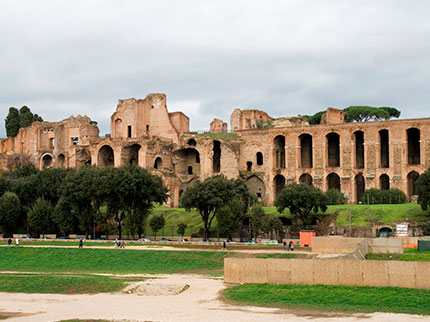
The Circus Maximus
What you can see nowadays is a large oval park. However, it used to be a large meeting place for Roman citizens where they could watch chariot races and horse shows. If you go to the Orange Garden from Circus Maximus metro station, you really should stop off there and take a look. Just imagine what it would have been like centuries ago!
‘Bocca della Verità’ or the Mouth of Truth
If you’ve seen the film ‘Roman Holiday’, then you’re probably already familiar with the Mouth of Truth. In the film, a shy Audrey Hepburn puts her hand into the Mouth of Truth as Gregory Peck looks on. There is a curious medieval legend attached to this large, marble mask. Whenever somebody puts their hand inside its huge mouth, they run the risk of having it bitten off because the mouth could close at any time, never to open again.





























































